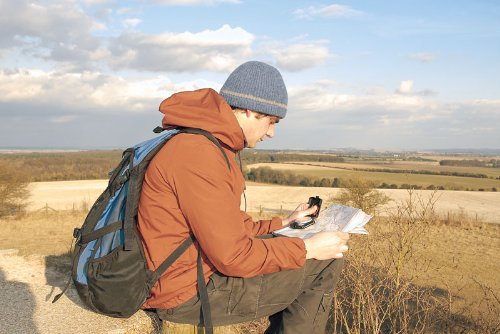
Navigating through the wilderness can be an exhilarating experience, but it’s crucial to know how to find your way without the help of modern technology. A compass is a timeless tool that has guided adventurers for centuries. In this comprehensive guide, we’ll explore how to use a compass to find direction, ensuring you stay on course during your outdoor adventures.
The Basics of a Compass
Before we dive into how to use a compass, let’s familiarise ourselves with its parts. A compass consists of a magnetised needle that aligns with Earth’s magnetic field, pointing towards the magnetic north. The compass housing, or bezel, rotates around the needle and features degree markings to measure direction.
For a reliable and accurate compass, consider browsing the Compass collection at Rock and Mountain, featuring well-known brands like Silva and Garmin.
Step 1: Setting the Map and Compass
To use a compass for finding direction, start by laying your map flat on a level surface. Place your compass on the map so that the baseplate’s straight edge aligns with your desired travel route.
Step 2: Aligning the Compass with North
Rotate the compass housing until the “N” (north) marker aligns with the direction of travel arrow. Ensure that the orienting lines within the compass housing are parallel to the map’s north-south grid lines.
Step 3: Taking a Bearing
Now that your compass is set, hold it flat in your hand at waist level. Rotate your body until the magnetised needle aligns with the orienting arrow within the compass housing. The direction of travel arrow now points towards your destination.
Step 4: Following the Bearing
Keep an eye on your compass as you walk, ensuring the magnetised needle stays aligned with the orienting arrow. It’s crucial to maintain your bearing while navigating, but be sure to stay aware of your surroundings and any obstacles in your path.
Step 5: Adjusting for Declination
Magnetic north and true north are not the same. The angle between these two points is called declination, which varies depending on your location. Check your map for the local declination, and adjust your compass accordingly.
Step 6: Checking Your Progress
Periodically check your map and surroundings to confirm you’re on the right track. By using your compass in conjunction with your map, you’ll have a better understanding of your location and how far you’ve travelled.
Conclusion
A compass is an indispensable tool for any outdoor enthusiast. By mastering the art of using a compass, you’ll have the confidence to explore and navigate any terrain. For more navigation tools, visit the Devices for Navigation section at Rock and Mountain.
Remember, practice makes perfect. Spend time honing your compass skills, and you’ll be well-prepared for any adventure that comes your way. Happy exploring!

